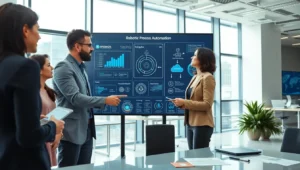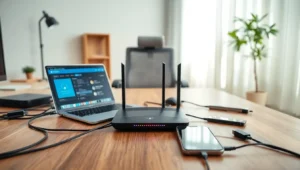In the world of procurement, where every dollar counts and efficiency is king, emerging technologies are stepping onto the stage like Elon Musk at a Tesla launch. From automating processes that would make anyone’s head spin to employing artificial intelligence for smarter decision-making, it’s a technological renaissance that procurement professionals can’t afford to ignore. This article digs into the latest innovations that are reshaping the procurement landscape, grab a cup of coffee, because this is not just another tech talk: it’s a whole new reality.
Table of Contents
Toggle1. Overview Of Procurement Technologies

The procurement field has evolved tremendously over the years. Historically, it was all about managing supplier relationships and keeping a keen eye on costs. But, as organizations strive for competitive advantage, they are increasingly turning to technology to streamline their processes.
Modern procurement technologies encompass a range of solutions that enhance operational efficiency, improve supplier collaboration, and foster robust data management. The ultimate goal is to create a seamless procurement process that not only saves time but also boosts company bottom lines. Keeping up with these technologies is key: after all, you wouldn’t still use a flip phone, would you?
2. Key Emerging Technologies
As procurement professionals look ahead, several technologies stand out for their transformative potential.
2.1 Artificial Intelligence And Machine Learning
Artificial Intelligence (AI) and Machine Learning (ML) are rapidly gaining traction in procurement. These technologies help analyze vast amounts of data to uncover insights that would typically take humans hours or even days to process. They can forecast demand trends, optimize supplier selection, and automate mundane tasks, freeing up time for strategic thinking.
2.2 Blockchain Technology
Blockchain technology has emerged as a game changer for transparency and security in procurement. By creating a decentralized ledger, companies can trace products back to their origin, ensuring authenticity and ethical sourcing. It helps reduce fraud and improves traceability which is crucial in today’s socially conscious market.
2.3 Internet Of Things (IoT)
The Internet of Things (IoT) connects devices and processes, allowing for real-time data sharing. In procurement, IoT can monitor inventory levels automatically or track shipments, so improving supply chain visibility. This level of connectivity leads to better inventory management and faster response times.
2.4 Robotic Process Automation (RPA)
Robotic Process Automation streamlines repetitive tasks, such as invoice processing and purchase order approvals. RPA takes over these monotonous activities, reducing human error and accelerating processes, allowing teams to focus on more valuable contributions to procurement strategy.
3. Benefits Of Adopting Emerging Technologies
Adopting these innovative technologies comes with a host of benefits that can significantly enhance the procurement function.
3.1 Enhanced Efficiency and Cost Reduction
Gone are the days when procurement happened in slow motion. With technologies like AI and RPA, efficiency skyrockets, leading to cost reductions that would make even the Grinch smile. Automation minimizes manual errors and speeds up procurement cycles, allowing companies to secure better deals and optimize spending.
3.2 Improved Data Analytics and Decision-Making
Access to accurate data can be likened to having a crystal ball. Emerging technologies empower procurement teams to analyze market trends and supplier performance with unprecedented agility. This leads to informed decisions backed by real-time analytics, enhancing strategic sourcing efforts.
3.3 Increased Transparency and Compliance
In an environment where regulations and standards are ever-tightening, transparency is critical. Blockchain and IoT increase compliance by providing clear visibility into supply chains. Procurement professionals can readily demonstrate ethical sourcing and compliance efforts, vital for maintaining both customer trust and regulatory standards.
4. Challenges In Implementation
Even though the advantages, integrating emerging technologies in procurement is not without its challenges.
4.1 Change Management
Bringing new technology into the workplace can feel like trying to open a ketchup bottle, frustrating and messy. Change management is crucial, as employees must adapt to new tools and methods. A robust training program and clear communication strategy can help alleviate fears and encourage buy-in.
4.2 Integration With Existing Systems
Many organizations already use various procurement tools. The key challenge lies in integrating new technologies with existing systems, ensuring data flows seamlessly across platforms. A well-planned IT strategy is essential for minimizing disruptions during implementation.
4.3 Skills Gap and Training Needs
Emerging technologies often require new skill sets that existing staff may lack. Close attention must be paid to identifying these gaps and providing appropriate training. Companies can partner with educational institutions or leverage online courses to equip their teams with the necessary expertise.
5. Future Trends In Procurement Technology
Looking forward, procurement technology is unlikely to slow down. The future will likely include advanced predictive analytics powered by AI and more widespread use of blockchain technology for verification purposes. The blending of procurement with data science is on the horizon, as organizations leverage data to drive not only procurement but corporate strategy as a whole.
Also, expect to see deeper integration of IoT in supply chains, facilitating smarter operations that can predict demand and adjust supply accordingly. As the digital landscape continues to evolve, staying ahead of these trends will be paramount for procurement professionals.





